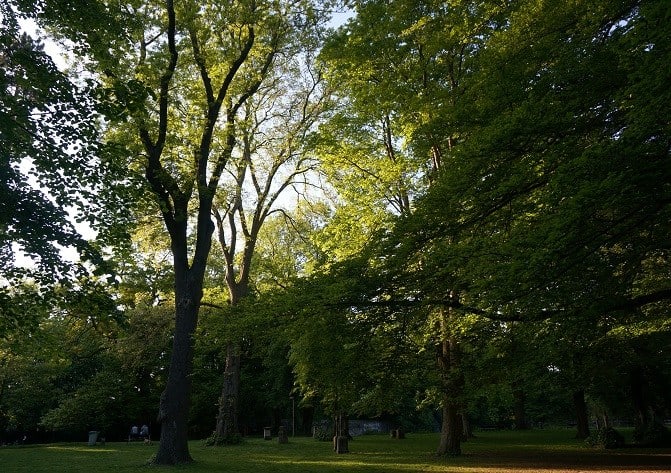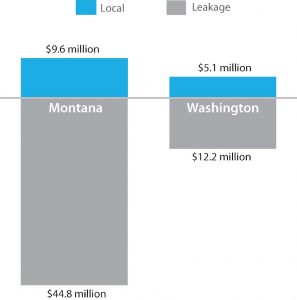Court Decisions
- Wildlife & Timber I Region 1
The District Court for the District of Montana granted the Forest Service’s motion for summary judgement on
National Environmental Policy Act (NEPA) and National Forest Management Act (NFMA) claims filed against the Forest Service concerning the North Whitetail Post Fire Project Salvage Sale (Whitetail Project) in the Custer National Forest in Native Ecosystems Council v. Weldon et al. In 2012 the Ash Creek Fire burned across the Whitetail Project area. Following the fire, the Forest Service implemented three salvage sales in the vicinity of the fire; one in 2013, one in 2015, and one in 2016. These sales were categorically excluded from NEPA under an exclusion for the “salvage of dead and/or dying trees not to exceed 250 acres [and] requiring no more than 1/2 mile of temporary road construction.” Plaintiffs assert that the Forest Service improperly segmented these salvage sales and has minimized the impact of the sales on the black-backed woodpecker.
An agency may invoke a categorical exclusion (CE) to NEPA if an action falls within “a category of actions which do not individually or cumulatively have a significant effect on the human environment.” When an agency decides to proceed under a CE, it is required to adequately explain its decision and ensure circumstances do not exist that would have significant environmental effects. Plaintiffs claimed the salvage sales cumulatively did have significant environmental effects and therefore the Forest Service could not use a CE. The court found, however, that the Forest Service provided adequate explanation as to why the sales did not have significant environmental impacts and so found that the Forest Service did not violate NEPA by using a CE.
Plaintiffs argued that the Forest Service violated NFMA by not using the best available science and failing to adequately address the habitat needs of the black-backed woodpecker, a sensitive species on the Custer Gallatin National Forest. The court did not find the plaintiff’s arguments persuasive; the court concluded that the plaintiffs failed to show that the Forest Service did not apply the best available science, and that the Forest Service adequately explained how the salvage sales’ impacts would not affect the woodpecker’s viability. Accordingly, the court found that the Forest Service did not violate NFMA and that the plaintiff’s concerns were not borne out by the facts of the case. (16-00106, D. Mont.).
- Wildlife I Region 4
The District Court for the District of Idaho dismissed the Endangered Species Act (ESA) action filed by the
plaintiffs against the Payette National Forest in WildEarth Guardians v. Lannom et al. The original action, filed on September 21, 2016, alleged the Forest Service violated the ESA by failing to consult with the U.S. Fish & Wildlife Service (FWS) on the impacts of the Payette National Forest Travel Management Plain on bull trout. Plaintiffs did not know, however, that the Forest Service had already started to engage in consultations with FWS at the time of filing. Without the ESA claim, the court found it had no jurisdiction to proceed.
Plaintiffs asked the court for a stay in the litigation until the plaintiff’s received the results of the consultation. The court, however, ruled that the court’s interest in not letting “[t]he case languish for a year on a docket that the Court is striving to keep current” outweighed the plaintiff’s interest in avoiding having to pay another filing fee to start a new lawsuit. Accordingly, the court dismissed the action without prejudice. (16-00428, D. Idaho).
Litigation Update
- No new litigation updates.
New Cases
- No new cases.
Notices of Intent
- Timber & Wildlife I Region 1
The Native Ecosystems Council and the Alliance for the Wild Rockies filed a Notice of Intent to Sue (N01) on February 3, 2017 for alleged ESA violations concerning the Smith Shields Forest Health Project on the Custer Gallatin National Forest. The project calls for clearcutting 351 acres and thinning another 1,309 acres within the Crazy Mountains which is identified as a secondary, unoccupied habitat for the Canada lynx in the Northern Rockies Lynx Management Direction (Lynx Amendment). The Forest Service, applying the Lynx Amendment, determined that the project would not adversely impact Canadian lynx habitat.
The NOI claims that the Lynx Amendment violates the ESA because it does not require the Forest Service to carefully consider the current best science concerning lynx habitat. According to the NOI, maintaining linkage areas between core lynx habitats is a key feature for lynx conservation and that the best science shows that clearcutting and forest thinning severely reduces the value of these linkages to Canada lynx. The NOI claims that the Lynx Amendment does not require the Forest Service to consider linkage areas in Forest Service determinations. The NOI concludes that because the Lynx Amendment does not require the Forest Service to protect these linkage areas and as a result the Smith Shield Forest Health Project does not address how the project’s clearcutting and thinning will affect these areas, both the Lynx Amendment and the Smith Shield Forest Health Project are in violation of the ESA.
Natural Resource Management Decisions Involving Other Agencies
- No new decisions.
The NFS Litigation Weekly Newsletter is provided to Forest Service employees for internal, informational purposes and is not intended to provide a legal/policy opinion or interpretation of its subject matter. Information presented in the Litigation Weekly is publicly available via official court records. Official court records should be consulted for the most complete and accurate discussion of each case.
Smith Shield Forest Health Project NOI
Native Ecosystems Council v Weldon
WildEarthGuardians v Lannom


